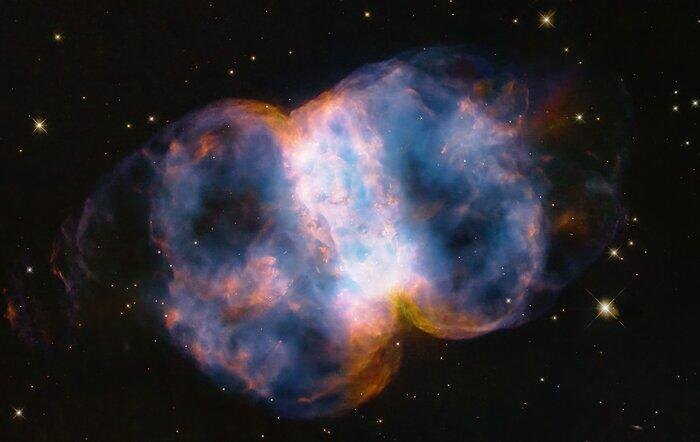Астрономы показали фотографию далекой умирающей звезды — Мессье 76 (M76)

Совместно с Европейским космическим агентством (ESA), NASA опубликовала фотографию туманности Маленькая Гантель, которая находится на расстоянии 3400 световых лет от Земли. Снимок был сделан с помощью орбитального телескопа «Хаббл».
Эта космическая область также известна как Мессье 76 (M76) и представляет собой планетарную туманность, состоящую из газа, оставленного после смерти красного гиганта. В процессе эволюции такие звезды превращаются в белых карликов, которые являются мертвыми и сверхплотными.
На фотографии видны кольца, образующие ребра, а также стержневая структура. Ученые предполагают, что центральное кольцо было сформировано на раннем этапе эволюции под влиянием другой звезды. Газ, высвободившийся после смерти звезды, сформировал две расширяющиеся области по бокам от центрального стержня.
Поток газа может достигать невероятной скорости, превышающей 3 000 000 км/ч. Звезда в результате превращается в белого карлика, оставляя небольшую точку в центре туманности. Газ вокруг начинает светиться благодаря ультрафиолетовому излучению этой точки. Красный цвет обусловлен азотом, а синий — кислородом.






